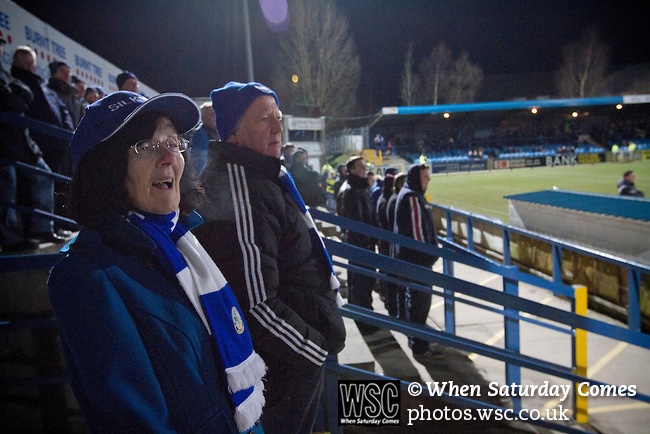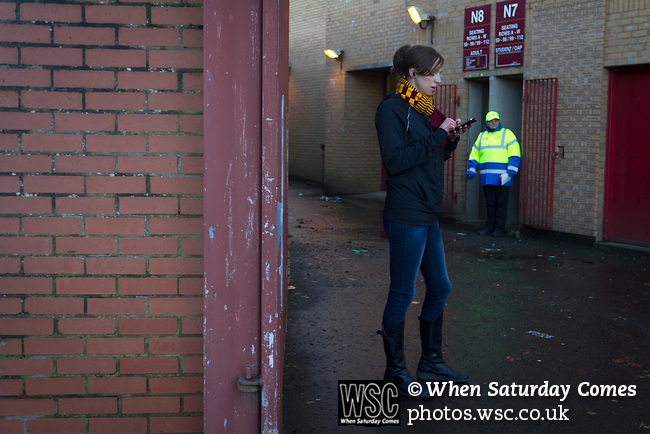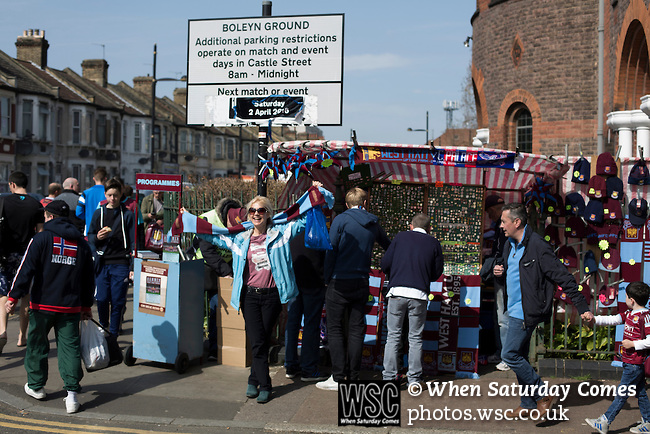
Women’s football has made huge progress both on the pitch and in the stands but there is still work to be done – as Linda Sharples highlighted in May 1991
17 July ~ Whatever it is about football that sets the pulse racing at five to three on a Saturday and causes people to go to extreme lengths to follow teams which seem destined to stay in the lower divisions well into the 21st century, women are not immune to it.
A trip to the primary school at playtime will reveal at least a few girls enjoying that prince among games, “keepy uppy”. Similarly, every club has its fair share of middle-aged women who have been standing on the terraces for 20, 30 or 40 years. Of course, women form a minority of any football crowd, but this is not surprising since we are continually told that it’s not feminine/lady-like/attractive to spend time at football grounds – in short, it’s a man’s game.
The reasons for women becoming supporters are as varied as those for men. My own interest began with my grandmother, lifelong supporter of Huddersfield Town, telling romantic tales of the days of hard leather footballs, pit boots and shorts down to the knees.
Coming from Yorkshire, the male members of the family were supposed to indulge in more macho pastimes, such as tearing engines to bits and watching or playing rugby league. Other women I know started watching football because their parents, friends or boyfriends did, or simply because the club formed an important part of the community in which they lived.
Whatever the reasons, female football supporters are every bit as passionate as their male counterparts.In recent years there has been a general anti-football campaign fuelled mainly by the media, which has caused crowds to diminish, and helped reinforce people’s prejudices against supporters. Consequently, football fans in general, and female fans in particular, are viewed as strangely masochistic creatures.
Everyone who goes to football matches suffers from these views, but I would suggest that women get the worst of it. The attitudes of people to my own obsession with football have changed over the years. As a girl an interest in sport was thought to be healthy, and even if it was football that had captured my imagination, at least I was getting some fresh air.

Of course, once I became an adolescent the general attitude was that I was just going to lust after the bodies of virile young men. Now I support Ipswich Town, once home of the Adonis-like figures John Wark and Eric Gates – need I say more? Since I have been married people are confused; I no longer fit into one of their preconceived ideas about women who spend their spare time at a football ground when they could be going shopping, and so I am treated as something of an eccentric.
Contrary to popular opinion, male supporters, in the main, treat us with respect. Whenever crowd conditions become threatening, women are usually protected by other supporters where possible, and it is unlikely that women will be involved in any fracas at a football ground. Indeed, clubs with a relatively large female following tend to be less intimidating, and most male supporters seem to welcome this.
Of course, chants aimed at women are still in evidence, and we often hear sexist comments expressed by men who think that we should spend our leisure time at home comparing knitting patterns. While I don’t condone this sort of behaviour at games, I don’t think it is part of football culture in particular, more part of British culture in general. Some people are sexist, some sexist people are football supporters.
So what of the clubs’ attitudes to their female supporters? At first glance, female involvement in most clubs is confined to selling pies, doing the electrical work and parading round the ground in shorts on matchdays selling pennants and programmes.
To be fair, women have had fairly high profile in some supporters’ clubs, many holding executive positions. Indeed, they have a vested interest in doing so since they are often responsible for children and need to be involved in planning seating arrangements and facilities for them. Whatever the motives or women being involved in official supporters’ clubs, at least they are there and visible.
As far as being involved in the running of clubs goes, women are, in the main, absent. Club boards are almost exclusively male, as are management and coaching staff. The boardrooms are usually occupied by local business people, so it is possible that the under-representation of women there is just a reflection of the gender distribution of local industry.

However, the same argument does not apply to other posts in football clubs. The majority of physiotherapists in the health service are women. When was the last time you saw a woman sprint on to the pitch with the magic sponge and smelling salts?
It might be argued that since we’re talking about male professional footballers, it’s necessary to have male managers and coaches. Women do not play in the same leagues as men do, so therefore cannot understand game strategies and ball control etc.
These kinds of arguments have been used since the dark ages to keep women out of many professions and are based on pretty thin premises. Indeed, they have been discarded readily in times of war when it was necessary for women to work machinery, run factories and produce goods which they suddenly become incapable of doing in peace time.
Clearly, no one would expect a club to put totally inexperienced people in positions of power, purely for the sake of sexual equality, any more than they would expect a fan to be plucked from the terraces and given the manager’s job. However, there are enough women involved in the game to expect some representation. Putting a women’s page in the matchday programme is simply not enough.
Around the country’s grounds we have to suffer the same inadequate facilities as everybody else. Bad catering, uncovered terracing and poor views of the pitch affect all supporters. However, some clubs must come close to criminal in their neglect of basic facilities for women, especially in visitors’ sections. If you think men’s toilets sometimes leave a lot to be desired, you should see some of the ladies’ (Barnsley FC take note).
Most clubs have Football In The Community schemes of some sort at the moment, and there is evidence that women form a part of them. Certainly when clubs have set up coaching sessions in local schools they have not always been restricted to boys, and some girls are seen taking part. Also, several clubs have seen a resurgence of interest in their women’s teams in the last two years.
If handled carefully these schemes could play an important part in the resurrection of some clubs’ fortunes, bringing in new talent and support, and rekindling the community spirit which dwindled in the late 1980s. If the game is to thrive, it is in everybody’s interests to encourage female involvement in the clubs at every level and to promote women’s teams. Fans can play their part by taking a trip to see their club’s women’s team sometime – you might be surprised. Linda Sharples
This article first appeared in WSC 51, May 1991. Subscribers get free access to the complete WSC digital archive – you can find out more details here
Top photo by Colin McPherson/WSC Photos: Fans on the terrace at Macclesfield’s Moss Rose, 2013
Middle photo by Colin McPherson/WSC Photos: A female supporter outside Motherwell’s Fir Park, 2015
Bottom photo by Colin McPherson/WSC Photos: A woman poses for a photo near West Ham’s Upton Park, 2016
